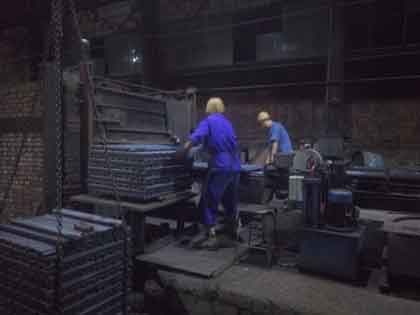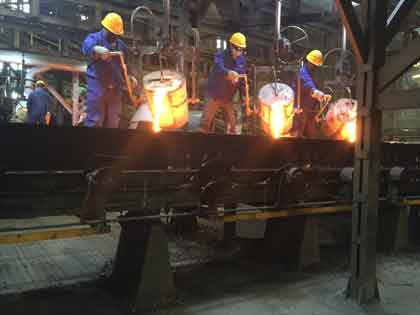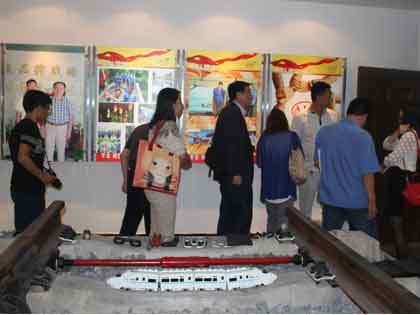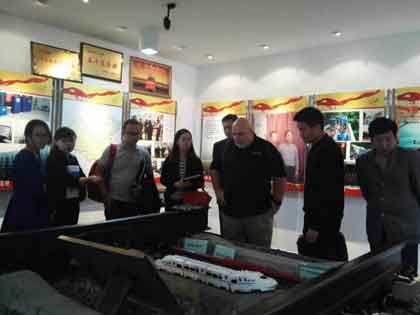As a professional rail joints manufacturer, we supply many types of rail joints (also called rail joint bars or railway fish plates). You can certainly find what you are looking for here. Below is the summary of some popular international types of rail joints that we manufacture and supply.
AREMA Standard Rail Joints
| Types | Material | Holes | Diameter of holes / length | Standard |
|---|---|---|---|---|
| 115RE rail joint | Steel 55# | 4 or 6 | 1.1875” / 914.4 mm | ASCE 2007 |
| 132RE rail joint | Steel 55# | 4 or 6 | 1.3125” / 914.4 mm | ASCE 2007 |
| 136RE rail joint | Steel 55# | 4 or 6 | 1.3125” / 914.4 mm | ASCE 2007 |
| 1041b.CR rail joint | Steel 55# | 4 or 6 | 1.0625” / 914.4 mm | ASCE 2007 |
| 1051b.CR rail joint | Steel 55# | 4 or 6 | 1.3125” / 914.4 mm | ASCE 2007 |
| 1351b.CR rail joint | Steel 55# | 4 or 6 | 1.1875” / 914.4 mm | ASCE 2007 |
| 1711b.CR rail joint | Steel 55# | 4 or 6 | 1.1875” / 914.4 mm | ASCE 2007 |
| 1751b.CR rail joint | Steel 55# | 4 or 6 | 1.1875” / 914.4 mm | ASCE 2007 |
UIC Standard Rail Joints
| Types | Used for Rail | Material | Holes | Standard |
|---|---|---|---|---|
| U79 railway fish plate | UIC54 Rail | European Grade 700 | 4 or 6 | UIC 864 |
| U85 railway fish plate | UIC60 Rail | European Grade 700 | 4 or 6 | UIC 864 |
BS Standard Rail Joints
| Types | Material | Holes | Weight | Standard |
|---|---|---|---|---|
| BS75R railway fish plate | European Grade 700 | 4 | 6.56 kg/pcs | BS 47-1 |
| BS60A railway fish plate | European Grade 700 | 4 | 5.61 kg/pcs | BS 47-1 |
| BS80A railway fish plate | European Grade 700 | 4 | 6.5 kg/pcs | BS 47-1 |
| BS90A railway fish plate | European Grade 700 | 4 |
13.23 kg/pcs 15.34 kg/pcs |
BS 47-1 |
| BS100A railway fish plate | European Grade 700 | 4 | 19.96 kg/pcs | BS 47-1 |
GB Standard Rail Joints
| Types | Material | Holes | Standard |
|---|---|---|---|
| 43kg, 50kg, 60kg, 75kg Railway fish plates | B7 | 4 or 6 | TB / T 2345-2008 |
ASCE Standard Rail Joints
| Types | Material | Holes | Weight | Standard |
|---|---|---|---|---|
| 41kg and 47kg railway fishplate | AS 1442 or AS 1448 | 4 or 6 | 22.2 kg/m | AS 1085.2-2002 |
| 50kg railway fishplate | AS 1442 or AS 1448 | 6 | 20.7 kg/m | AS 1085.2-2002 |
| 53kg railway fishplate | AS 1442 or AS 1448 | 4 or 6 | 23.3 kg/m | AS 1085.2-2002 |
| 60kg railway fishplate | AS 1442 or AS 1448 | 6 | 23.9 kg/m | AS 1085.2-2002 |
JISE Standard Rail Joints
| Types | Material | Holes | Standard |
|---|---|---|---|
| 37A, 50N, CR73, CR100, BS113A rail fish plate | SS490 or S20C | 4 or 6 | JIS E 1102-2001 |
DIN Standard Rail Joints
| Types | Used for Rail | Material | Weight | Standard |
|---|---|---|---|---|
| FI30 rail joint bar | S30 Rail | Grade 700 | 9.6 kg/m | DIN 5902-1995 |
| FI33 rail joint bar | S33 Rail | Grade 700 | 12.7 kg/m | DIN 5902-1995 |
| FI41 rail joint bar | S41 Rail | Grade 700 | 15.7 kg/m | DIN 5902-1995 |
| FI49 rail joint bar | S49 Rail | Grade 700 | 15.7 kg/m | DIN 5902-1995 |
Rail joints types essentially include bolted rail joints, compromise rail joints and insulated rail joints.
As a professional manufacturer of rail joint bars, we supply almost all the international standards of railway fish plates. Bolted rail joints are used to join two rails in jointed rail territory. In the continuous welded rail (CWR) territory, bolted joints are used to temporarily join rails before they are welded. Compromise rail joint bars are used to join two rails with different sections together. Insulated rail joints are further categorized as bonded or non-bonded rail joints. Bonded insulated rail joints are glued. Non-bonded insulated rail joints are basically bolted joints having some type of electrical insulating properties.
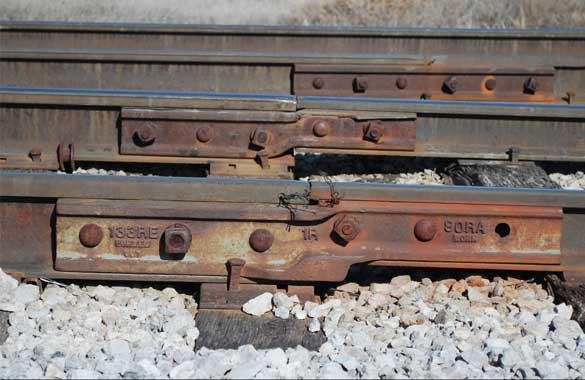
Although the bolted rail joint, compromise rail joint and insulated rail joint perform differently with different operational objectives, they share many similar design features. For example, they all use track bolts and rail joint bars and they all create a discontinuity in the running surface of the rail.
Why Rail Joints Matter? Rail Joints Function
As we all know, rail track bolts gradually fail due to yielding, and rail joint bars usually fail due to fatigue. The discontinuity in the running surface of steel rail creates conditions that can accelerate track degradation around the rail joint. At a minimum, the gap at the rail ends within the rail joint is a source of impact loading from passing wheels. Left unchecked, these impact loads increase rail end batter, thereby deteriorating the foundations, which further increase the impact forces generated by passing wheels.
Rail Joints Maintenance mainly includes 3 types: Surfacing due to ballast degradation; Grinding due to metal flow at the rail ends; Replacement of broken rail track bolts or rail joint bars.
We receive enquiries in English, Español (Spanish), Русский язык (Russian), Français (French) and العربية (Arabic). Our professional team will reply to you within one business day. Please feel free to contact us!

